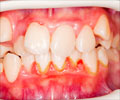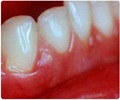There is an urgent need for increased efforts to prevent and treat chronic periodontitis, a form of gum disease, to reduce the risk for head and neck cancer, according to researchers at the University of Buffalo.
Led by Dr. Mine Tezal at Buffalo, periodontitis is an independent risk factor for head and neck squamous cell carcinoma."Prevent periodontitis; if you have it already, get treatment and maintain good oral hygiene," said Tezal.
Chronic periodontitis is characterized by progressive loss of the bone and soft tissue attachment that surround the teeth.
The researchers assessed the role of chronic periodontitis on head and neck squamous cell carcinoma, as well as the individual roles on three subsites: oral cavity, oropharyngeal and laryngeal.
They used radiographic measurement of bone loss to measure periodontitis among 463 patients, 207 of whom were controls.
The results of the study revealed that chronic periodontitis might represent a clinical high-risk profile for head and neck squamous cell carcinoma.
Advertisement
When they stratified the relationship by tobacco use, they found that the association persisted in those patients who never used tobacco.
Advertisement
However, this interaction, although statistically significant, was not very strong.
"Confirmatory studies with more comprehensive assessment of smoking, such as duration, quantity and patterns of use, as well as smokeless tobacco history are needed," said Tezal.
"Our study also suggests that chronic periodontitis may be associated with poorly differentiated tumor status in the oral cavity. Continuous stimulation of cellular proliferation by chronic inflammation may be responsible for this histological type. However, grading is subjective and we only observed this association in the oral cavity. Therefore, this association may be due to chance and needs further exploration," she added.
Andrew Olshan, Ph.D., said these results lend further support to the potential importance of poor oral health in this form of cancer.
Olshan said, "Although the study is comparatively small, the researchers were able to also see an association between bone loss and the risk of head and neck cancer."
The results of the study have been published in Cancer Epidemiology, Biomarkers and Prevention, a journal of the American Association for Cancer Research.
Source-ANI
RAS














